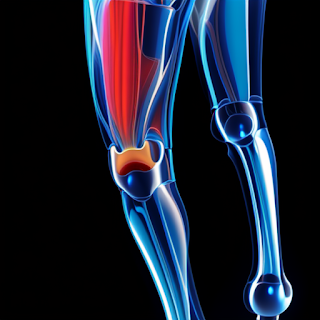Basal Joint Arthritis: Exploring Surgical and Non-Surgical Treatment Options
Basal joint arthritis, also known as thumb arthritis, can cause significant pain, stiffness, and functional limitations in the thumb joint. When conservative treatments fail to provide relief, individuals may consider surgical or non-surgical options. In this article, we will explore both treatment approaches for basal joint arthritis, including their benefits, considerations, and potential outcomes.
Non-Surgical Treatment Options:
1. Medications:
Nonsteroidal anti-inflammatory drugs (NSAIDs) and acetaminophen are commonly used to manage pain and reduce inflammation associated with basal joint arthritis. These medications can provide temporary relief, but they do not address the underlying cause of the condition.
2. Splinting and Bracing:
Wearing a splint or brace can offer support and stability to the thumb joint, reducing pain and limiting movement. These devices can be particularly helpful during activities that aggravate symptoms. However, splinting is a conservative measure that does not reverse the damage caused by arthritis.
3. Physical Therapy:
A physical therapist can guide individuals through exercises and techniques aimed at improving range of motion, strengthening the surrounding muscles, and reducing pain. Physical therapy can enhance hand function and support daily activities. However, it may take time to achieve noticeable results, and the effectiveness can vary from person to person.
4. Assistive Devices and Tools:
Using adaptive tools and utensils with larger grips or modified designs can help individuals with basal joint arthritis perform daily tasks more comfortably. These devices minimize stress on the thumb joint and alleviate symptoms. However, they do not address the underlying arthritis.
Surgical Treatment Options:
1. Joint Fusion (Arthrodesis):
During joint fusion surgery, the bones of the thumb joint are permanently fused together using screws, plates, or pins. This eliminates the painful joint movement but also restricts thumb mobility. While joint fusion provides long-term pain relief, it may affect thumb function, especially in activities that require precise movements.
2. Joint Reconstruction (Arthroplasty):
Joint reconstruction involves removing the damaged joint surfaces and replacing them with grafts, joint implants, or tendon transfers. This procedure aims to restore thumb function while reducing pain. Joint reconstruction allows for more natural thumb movement compared to joint fusion. However, it may require a longer recovery period and carries the risk of implant failure or complications.
3. Tendon Transfers:
In some cases, surgeons may perform tendon transfers to stabilize the thumb joint. This involves transferring a tendon from another part of the hand or arm to improve thumb function and reduce pain. Tendon transfers can be performed alone or in combination with joint reconstruction or fusion.
Considerations and Potential Outcomes:
1. Severity of Arthritis:
The extent of joint damage and the severity of symptoms play a crucial role in determining the most suitable treatment option. Non-surgical treatments are typically recommended for milder cases, while surgical interventions are considered for more advanced arthritis.
2. Recovery and Rehabilitation:
Surgical treatments may require a period of immobilization, followed by physical therapy to regain strength and mobility. Recovery times can vary depending on the procedure performed and individual healing factors.
3. Risks and Complications:
As with any surgery, there are potential risks and complications associated with surgical treatments for basal joint arthritis. These can include infection, nerve damage, implant failure, and prolonged recovery.
4. Consultation with a Hand Specialist:
It is crucial to consult with a hand surgeon or specialist who can assess the individual's condition, discuss treatment options, and provide personalized recommendations based on their expertise and experience.
Conclusion:
When conservative treatments fail to provide adequate relief, surgical and non-surgical options are available for individuals with basal joint arthritis. Non-surgical approaches focus on symptom management, while surgical interventions aim to address the underlying joint damage. Each treatment option has its own benefits, considerations, and potential outcomes, and the most appropriate choice may vary depending on the individual's condition and preferences. Consulting with a healthcare professional specializing in hand conditions will help determine the best course of action for managing basal joint arthritis effectively.


Comments
Post a Comment